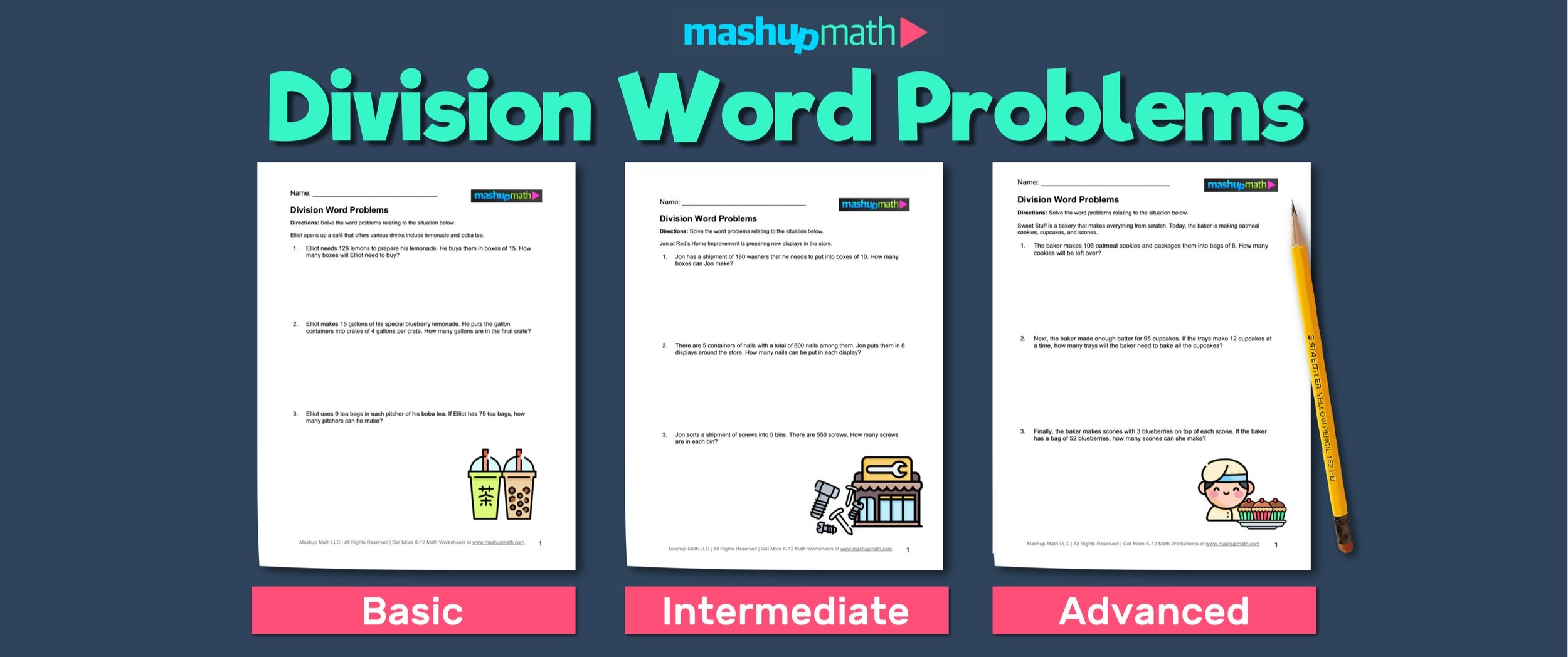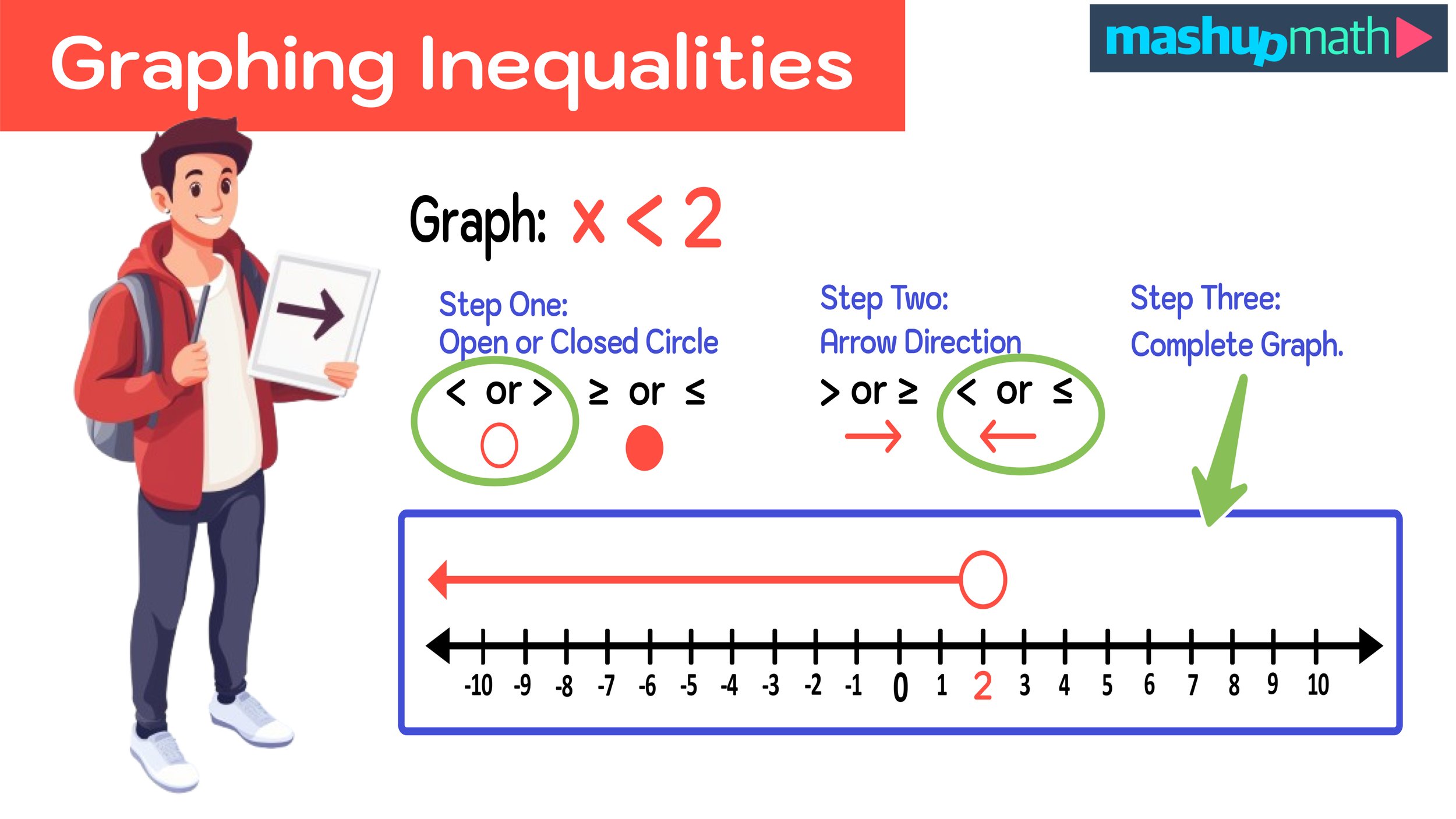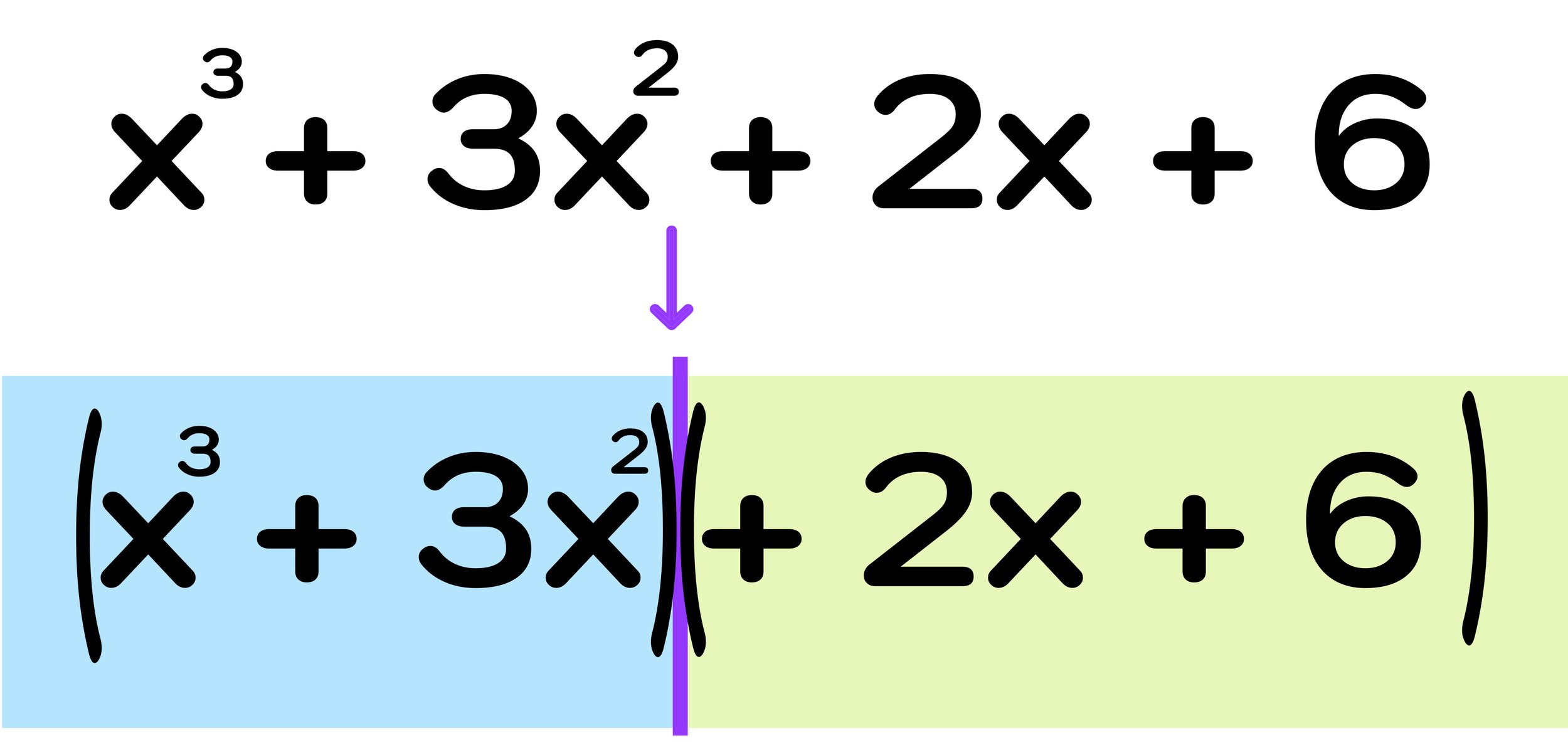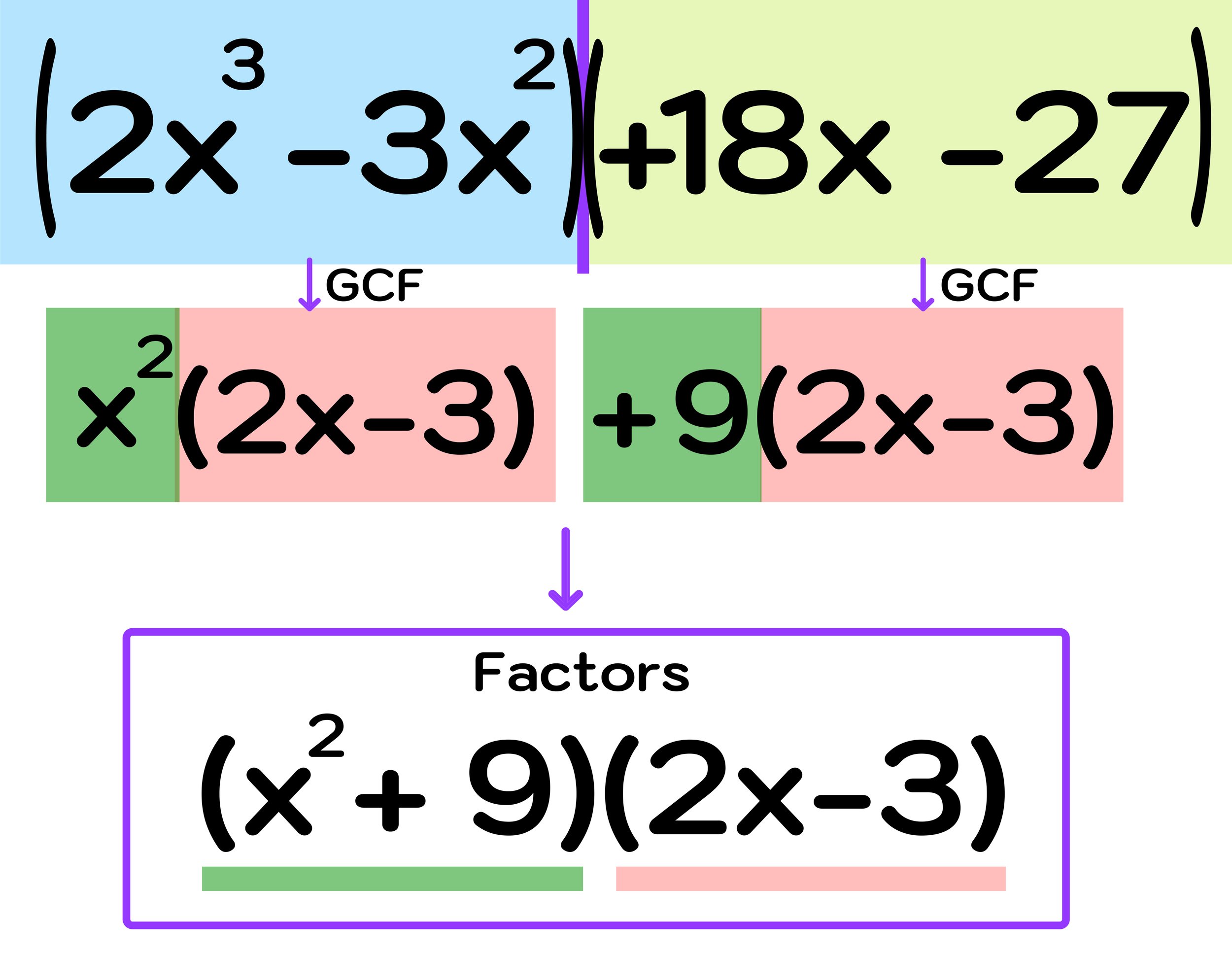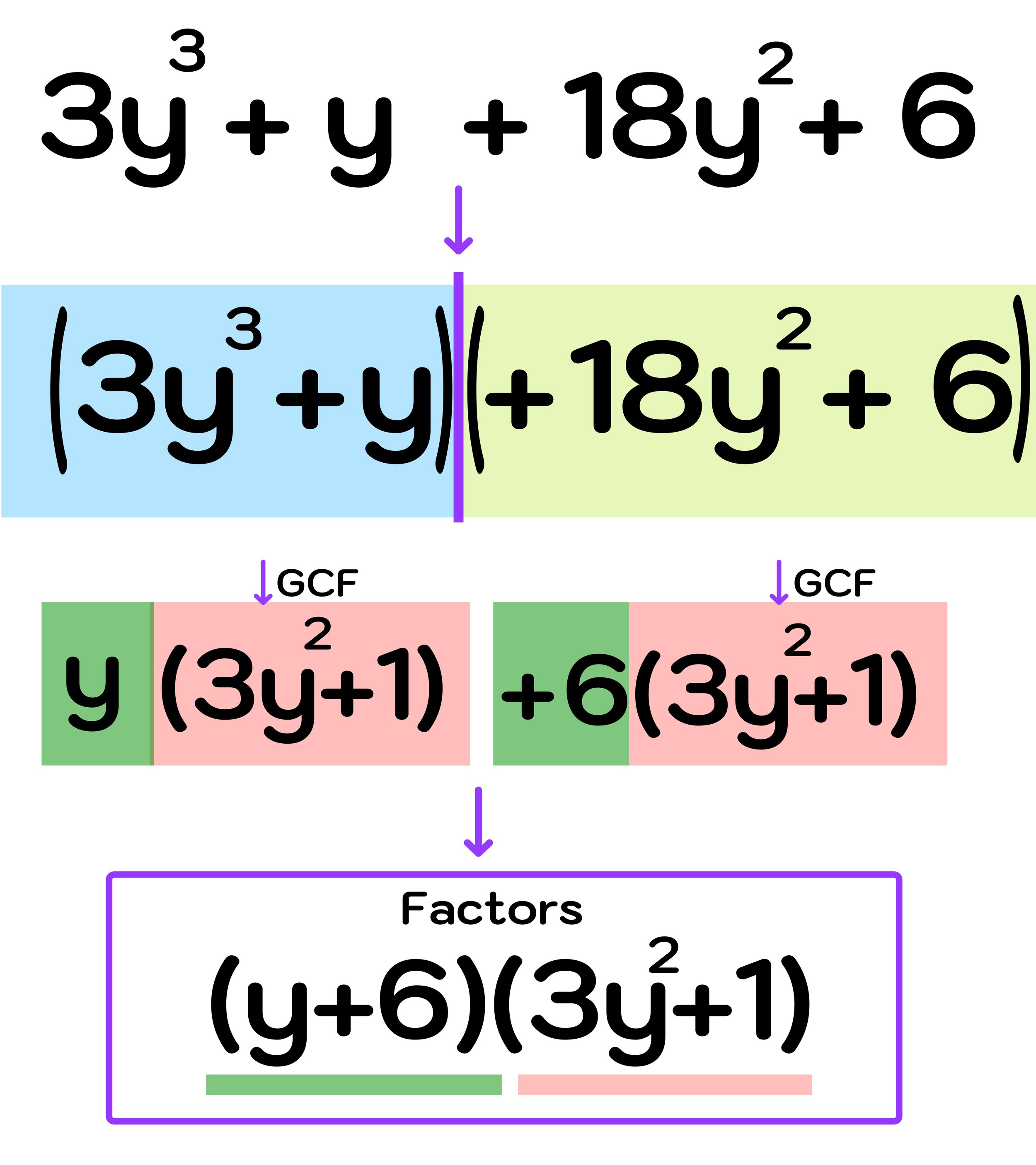Division Word Problems—Free PDF Worksheets
Do your students need extra practice working on division word problems?
Once your elementary math students learn how to perform division and become more comfortable with dividing numbers, the next step is to have them extend their understanding of division to solving real-world problems. By giving your students opportunities to work on word problems that require the use of division to find a solution, they must engage in higher-level thinking that will help them to not only better understand how to divide, but become better mathematical problem solvers as well.
If you are looking for free division word problems to share with your students in grades 3-5, then you will love the our free collection of Division Word Problems. Below, you will find previews and download links for 12 different division word problems worksheets (with answer keys included) that are divided into three categories based on difficulty levels:
Division Word Problems: Basic (Grades 3-4)
Division Word Problems: Intermediate (Grades 3-5)
Long Division Word Problems: Advanced (Grades 3-5)
Each worksheet is available as a PDF download that is printable and also easy to share on online learning platforms like Google Classroom.
To download any of the division word problems worksheets below, simply click on text link to access the pdf file, which you can print and/or save to your device to use with your students however you see fit. Enjoy!
Division Word Problems: Basic
▶ Suggested Grade Level(s): Grade 3, Grade 4
The following division word problems focus on beginner/basic applications of division to solve word problems.
Click any of the preview image boxes below to preview the word problems and click on the blue text link below any of the images to download the corresponding pdf worksheet and answer key.
Division Word Problems: Intermediate
▶ Suggested Grade Level(s): Grade 3, Grade 4, Grade 5
The following division word problems focus on intermediate applications of division to solve word problems.
Click any of the preview image boxes below to preview the word problems and click on the blue text link below any of the images to download the corresponding pdf worksheet and answer key.
Do you want more free K-8 math activities in your inbox every week?
Long Division Word Problems: Advanced
▶ Suggested Grade Level(s): Grade 3, Grade 4, Grade 5
The following division word problems focus on advanced applications of division (and long division) to solve word problems.
Click any of the preview image boxes below to preview the word problems and click on the blue text link below any of the images to download the corresponding pdf worksheet and answer key.
Tips for Solving Division Word Problems
Our free division word problems grade 4 and division word problems grade 5 worksheets allow students to practice and apply their understanding of division to real-world scenarios. However, even if your students have a strong understanding of division and long division, they may struggle to solve word problems since they require additional skills such as identifying key information, picking up on context clues, and answering in complete sentences.
If your students struggle with word problems, here are some helpful tips for being successful:
Always read the problem carefully: The first step to solving any of the division word problems is to carefully read the question, identify key information, and know exactly what the question is asking. It is helpful to look for and even highlight key words and phrases related to division such as split equally, divided evenly, left over, etc.
Draw diagrams to help you: Many students will benefit from using diagrams as visualize aids for understanding a given problem and how to solve it. For example, if a problem involves 24 apples divided evenly amongst 3 people, you could draw 24 circles (each representing one apple) and then divide that group into 3 equal parts to see how many apples are in each group.
Always ask yourself “what is this question asking me to do?”: By identifying exactly what a question is asking you to do, you will have a better idea of what the answer will look like and how you can find it.
Write your answer using complete sentences and double-check that it makes sense: Once you've solved a division word problem, write your final answer in a complete sentence that makes sense in the context of the problem. For example, if a question is about equally distributing 100 cupcakes between four people, it wouldn’t make sense if you concluded that each person receives 75 cupcakes (meaning that you should go back and try the problem again).
More Math Education Resources You Will Love:
Search Tags: division word problems, division word problems grade 4, division word problems grade 3, 3rd grade division word problems, division word problems for 3rd graders, division word problems grade 5, long division word problems, division word problem, division word problems for 4th graders, division word problems for 5th graders, 4th grade division word problems, division word problems 4th grade, long division worded problems



